
Rabbit Anti-HRG1 antibody
Neuregulin 1 beta 2; Acetylcholine receptor-inducing activity; ARIA; Breast cancer cell differentiation factor p45; GGF2; Glial growth factor; Heregulin; HGL; HRG; HRG1; HRGA; NDF; Neu differentiation factor; Neuregulin1; NRG 1; NRG1 beta; Pro-neuregulin-
View History [Clear]
Details
Product Name HRG1 Chinese Name 神经调节蛋白1β2抗体 Alias Neuregulin 1 beta 2; Acetylcholine receptor-inducing activity; ARIA; Breast cancer cell differentiation factor p45; GGF2; Glial growth factor; Heregulin; HGL; HRG; HRG1; HRGA; NDF; Neu differentiation factor; Neuregulin1; NRG 1; NRG1 beta; Pro-neuregulin-1, membrane-bound isoform; Sensory and motor neuron-derived factor; SMDF; NRG1_HUMAN. Research Area Cell biology Developmental biology Neurobiology Signal transduction Immunogen Species Rabbit Clonality Polyclonal React Species Rat, (predicted: Human, Mouse, Cow, Horse, Rabbit, Sheep, ) Applications ELISA=1:5000-10000 IHC-P=1:100-500 IHC-F=1:100-500 ICC=1:100-500 IF=1:100-500 (Paraffin sections need antigen repair)
not yet tested in other applications.
optimal dilutions/concentrations should be determined by the end user.Theoretical molecular weight 24/68kDa Cellular localization The nucleus The cell membrane Secretory protein Form Liquid Concentration 1mg/ml immunogen KLH conjugated synthetic peptide derived from human HRG1/Neuregulin 1 beta 2: 81-200/640 <Extracellular> Lsotype IgG Purification affinity purified by Protein A Buffer Solution 0.01M TBS(pH7.4) with 1% BSA, 0.03% Proclin300 and 50% Glycerol. Storage Shipped at 4℃. Store at -20 °C for one year. Avoid repeated freeze/thaw cycles. Attention This product as supplied is intended for research use only, not for use in human, therapeutic or diagnostic applications. PubMed PubMed Product Detail The protein encoded by this gene is a membrane glycoprotein that that mediates cell-cell signaling and plays a critical role in the growth and development of multiple organ systems. An extraordinary variety of different isoforms are produced from this gene through alternative promoter usage and splicing. These isoforms are expressed in a tissue-specific manner and differ significantly in their structure, and are classified as types I, II, III, IV, V and VI. Dysregulation of this gene has been linked to diseases such as cancer, schizophrenia, and bipolar disorder (BPD). [provided by RefSeq, Jun 2014]
Function:
Direct ligand for ERBB3 and ERBB4 tyrosine kinase receptors. Concomitantly recruits ERBB1 and ERBB2 coreceptors, resulting in ligand-stimulated tyrosine phosphorylation and activation of the ERBB receptors. The multiple isoforms perform diverse functions such as inducing growth and differentiation of epithelial, glial, neuronal, and skeletal muscle cells; inducing expression of acetylcholine receptor in synaptic vesicles during the formation of the neuromuscular junction; stimulating lobuloalveolar budding and milk production in the mammary gland and inducing differentiation of mammary tumor cells; stimulating Schwann cell proliferation; implication in the development of the myocardium such as trabeculation of the developing heart. Isoform 10 may play a role in motor and sensory neuron development.
Subunit:
The cytoplasmic domain interacts with the LIM domain region of LIMK1. Interacts with ERBB3 and ERBB4.
Subcellular Location:
Cell Membrane, Nuclear and Secreted
Tissue Specificity:
Type I isoforms are the predominant forms expressed in the endocardium. Isoform alpha is expressed in breast, ovary, testis, prostate, heart, skeletal muscle, lung, placenta liver, kidney, salivary gland, small intestine and brain, but not in uterus, stomach, pancreas, and spleen. Isoform 3 is the predominant form in mesenchymal cells and in non-neuronal organs, whereas isoform 6 is the major neuronal form. Isoform 8 is expressed in spinal cord and brain. Isoform 9 is the major form in skeletal muscle cells; in the nervous system it is expressed in spinal cord and brain. Also detected in adult heart, placenta, lung, liver, kidney, and pancreas. Isoform 10 is expressed in nervous system: spinal cord motor neurons, dorsal root ganglion neurons, and brain. Predominant isoform expressed in sensory and motor neurons. Not detected in adult heart, placenta, lung, liver, skeletal muscle, kidney, and pancreas. Not expressed in fetal lung, liver and kidney. Type IV isoforms are brain-specific.
Post-translational modifications:
Proteolytic cleavage close to the plasma membrane on the external face leads to the release of the soluble growth factor form.
N- and O-glycosylated. Extensive glycosylation precedes the proteolytic cleavage
DISEASE:
Note=A chromosomal aberration involving NRG1 produces gamma-heregulin. Translocation t(8;11) with TENM4. The translocation fuses the 5'-end of TENM4 to NRG1 (isoform 8). The product of this translocation was first thought to be an alternatively spliced isoform. Gamma-heregulin is a soluble activating ligand for the ERBB2-ERBB3 receptor complex and acts as an autocrine growth factor in a specific breast cancer cell line (MDA-MB-175). Not detected in breast carcinoma samples, including ductal, lobular, medullary, and mucinous histological types, neither in other breast cancer cell lines.
Similarity:
Belongs to the neuregulin family.
Contains 1 EGF-like domain.
Contains 1 Ig-like C2-type (immunoglobulin-like) domain.
SWISS:
Q02297
Gene ID:
3084
Database links:
Entrez Gene: 3084 HumanEntrez Gene: 211323 Mouse
Omim: 142445 Human
SwissProt: Q02297 Human
Unigene: 453951 Human
Unigene: 668810 Human
Unigene: 153432 Mouse
Product Picture
Antigen retrieval: citrate buffer ( 0.01M, pH 6.0 ), Boiling bathing for 15min; Block endogenous peroxidase by 3% Hydrogen peroxide for 30min; Blocking buffer (normal goat serum,C-0005) at 37℃ for 20 min;
Incubation: Anti-HRG1 Polyclonal Antibody, Unconjugated(SL11917R) 1:200, overnight at 4°C, followed by conjugation to the secondary antibody(SP-0023) and DAB(C-0010) staining
Paraformaldehyde-fixed, paraffin embedded (rat brain); Antigen retrieval by boiling in sodium citrate buffer (pH6.0) for 15min; Block endogenous peroxidase by 3% hydrogen peroxide for 20 minutes; Blocking buffer (normal goat serum) at 37°C for 30min; Antibody incubation with (HRG1) Polyclonal Antibody, Unconjugated (SL11917R) at 1:200 overnight at 4°C, followed by operating according to SP Kit(Rabbit) (sp-0023) instructionsand DAB staining.Tissue/cell: rat brain tissue; 4% Paraformaldehyde-fixed and paraffin-embedded;
Antigen retrieval: citrate buffer ( 0.01M, pH 6.0 ), Boiling bathing for 15min; Block endogenous peroxidase by 3% Hydrogen peroxide for 30min; Blocking buffer (normal goat serum,C-0005) at 37℃ for 20 min;
Incubation: Anti-HRG1 Polyclonal Antibody, Unconjugated(SL11917R) 1:200, overnight at 4°C, followed by conjugation to the secondary antibody(SP-0023) and DAB(C-0010) staining
Tissue/cell: rat brain tissue;4% Paraformaldehyde-fixed and paraffin-embedded;
Antigen retrieval: citrate buffer ( 0.01M, pH 6.0 ), Boiling bathing for 15min; Blocking buffer (normal goat serum,C-0005) at 37℃ for 20 min;
Incubation: Anti-HRG1 Polyclonal Antibody, Unconjugated(SL11917R) 1:200, overnight at 4°C; The secondary antibody was Goat Anti-Rabbit IgG, Cy3 conjugated (SL0295G-Cy3)used at 1:200 dilution for 40 minutes at 37°C. DAPI(5ug/ml,blue,C-0033) was used to stain the cell nuclei
Partial purchase records(bought amounts latest0)
No one bought this product
User Comment(Total0User Comment Num)
- No comment
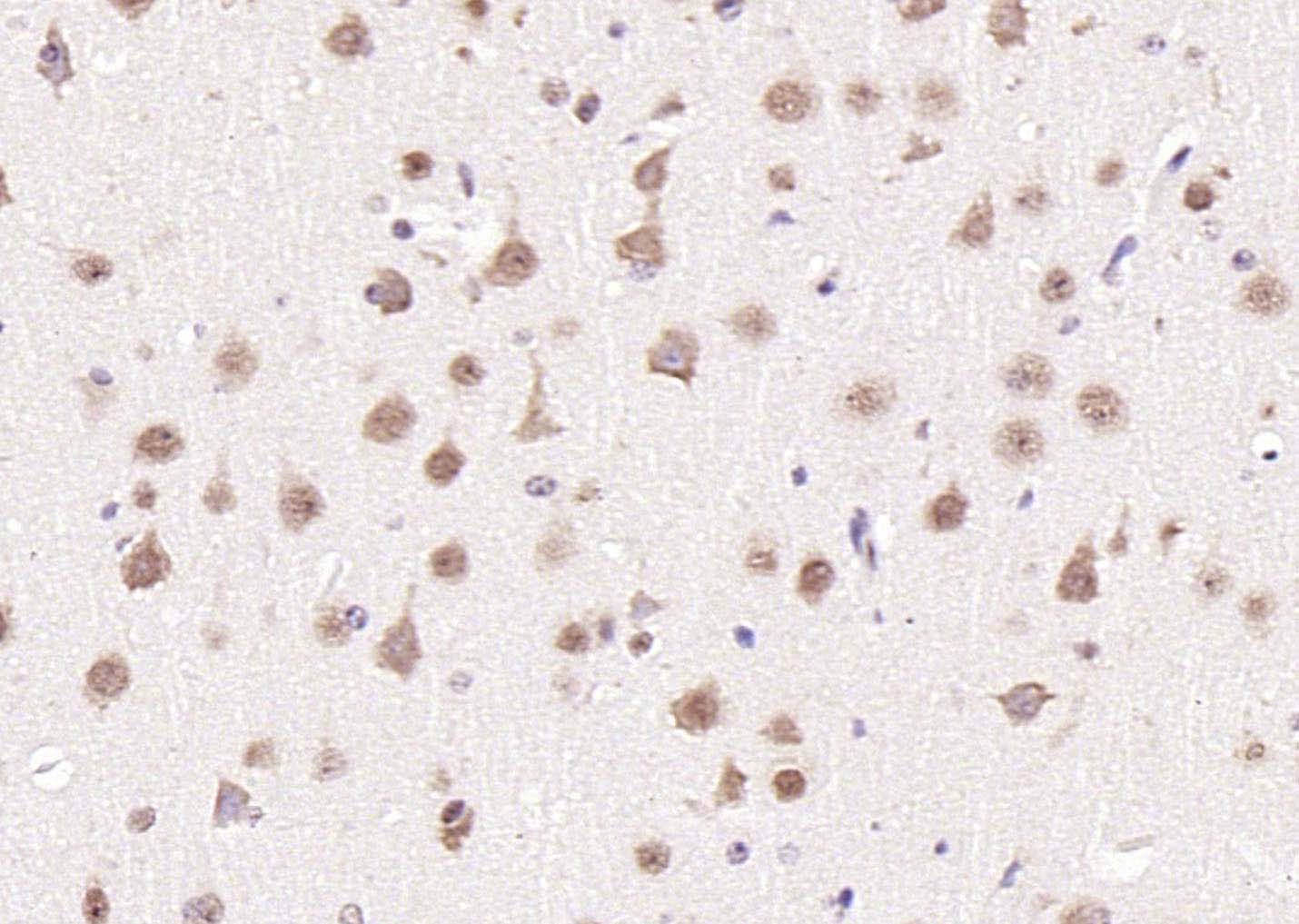
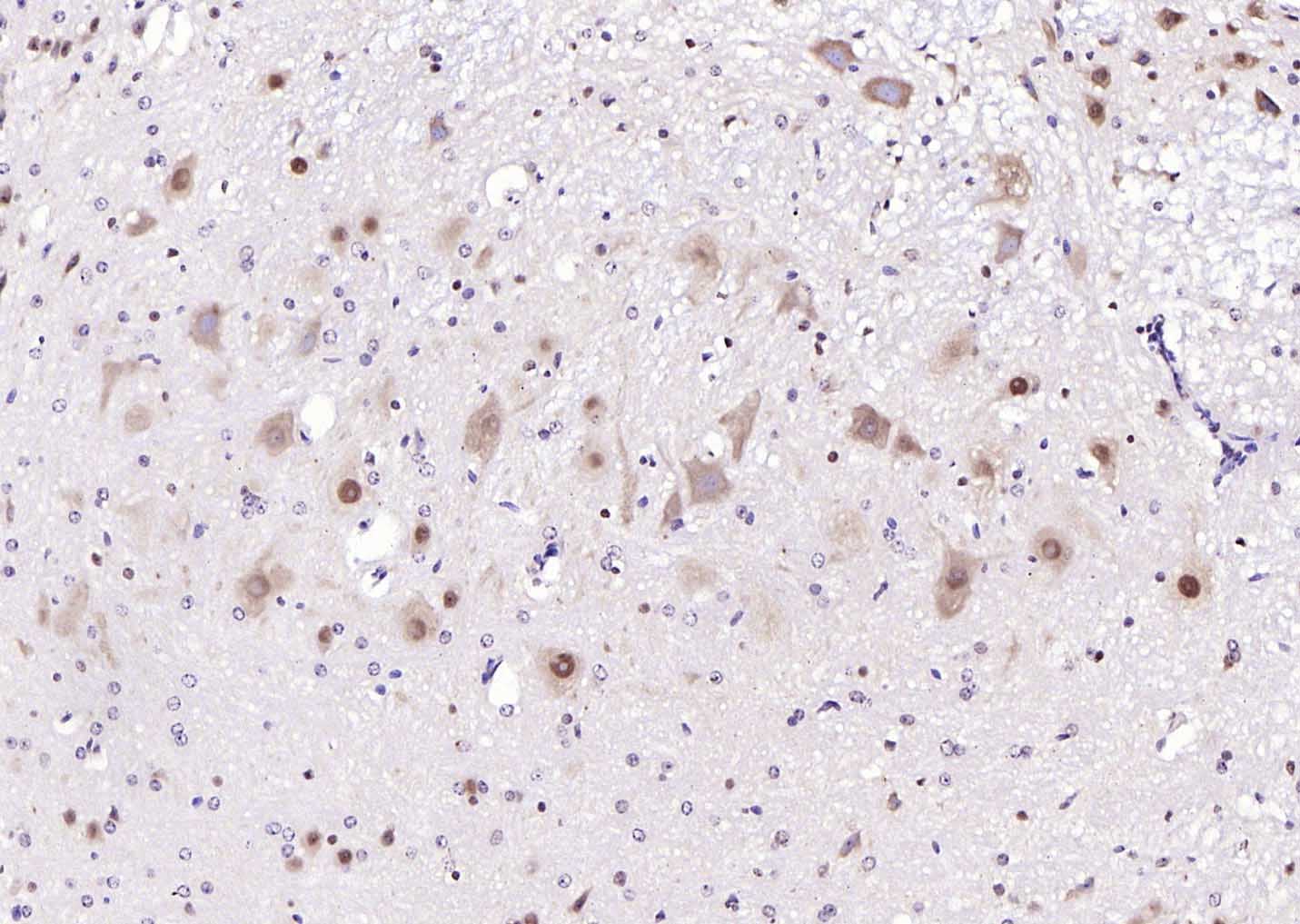
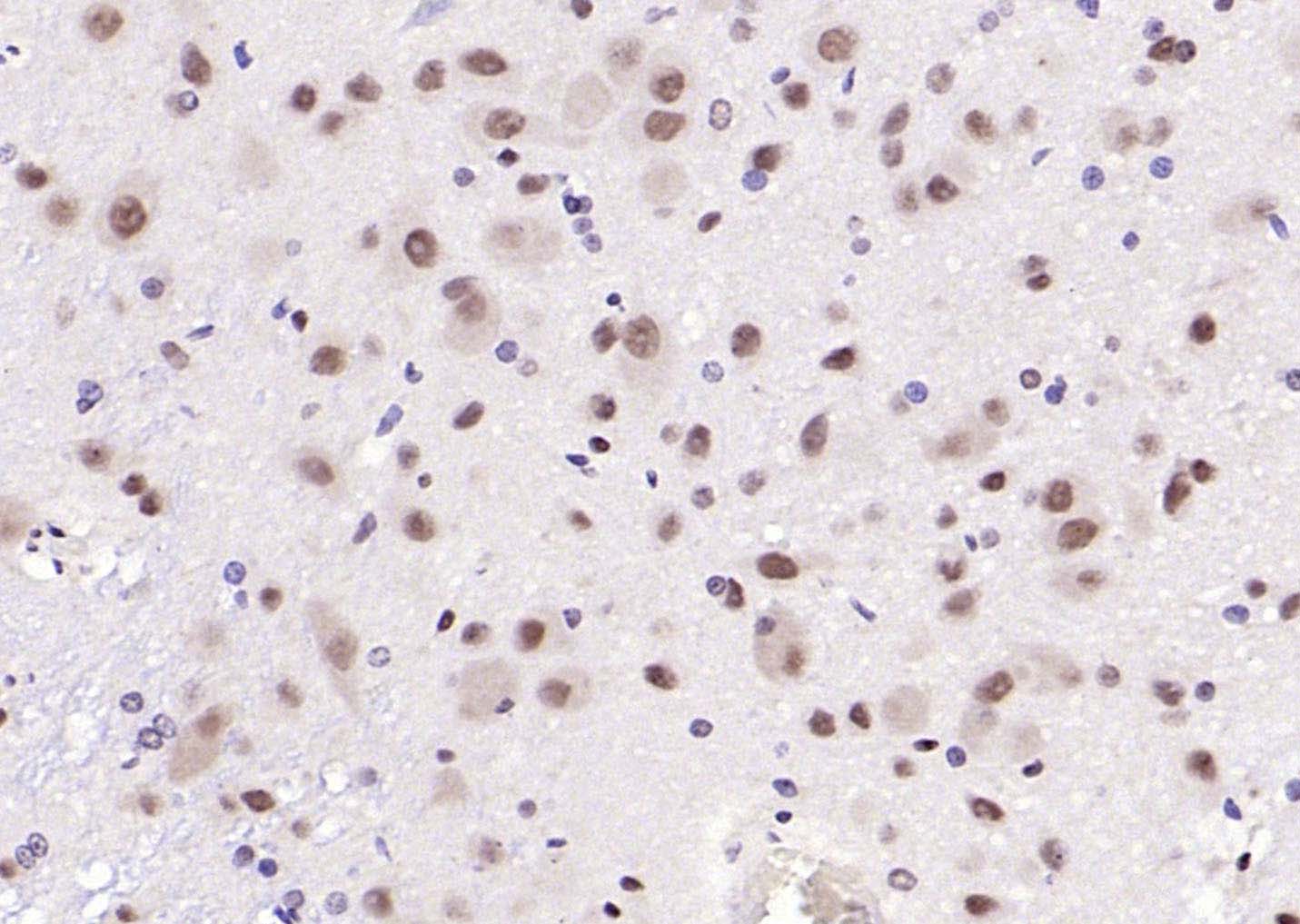
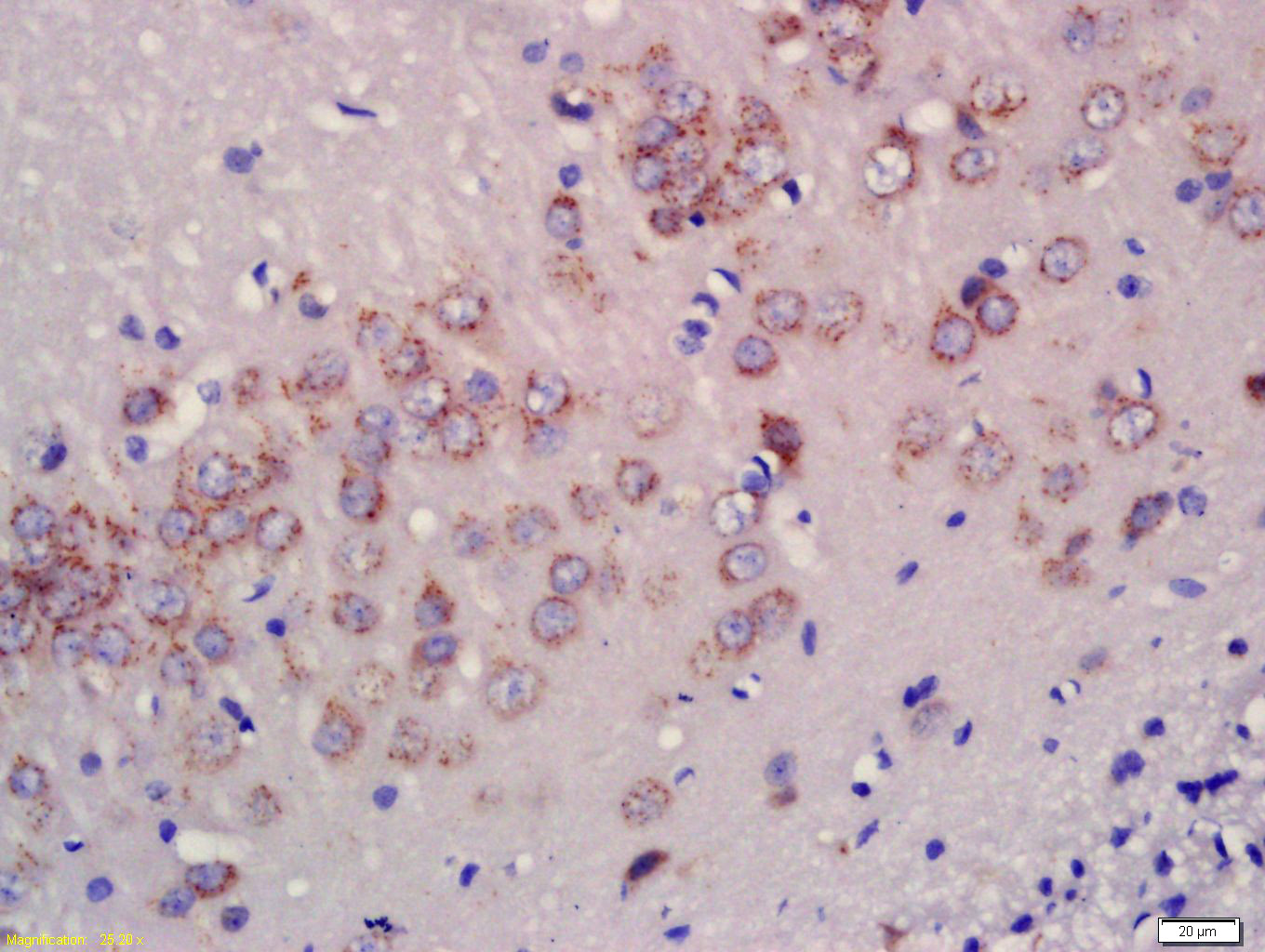
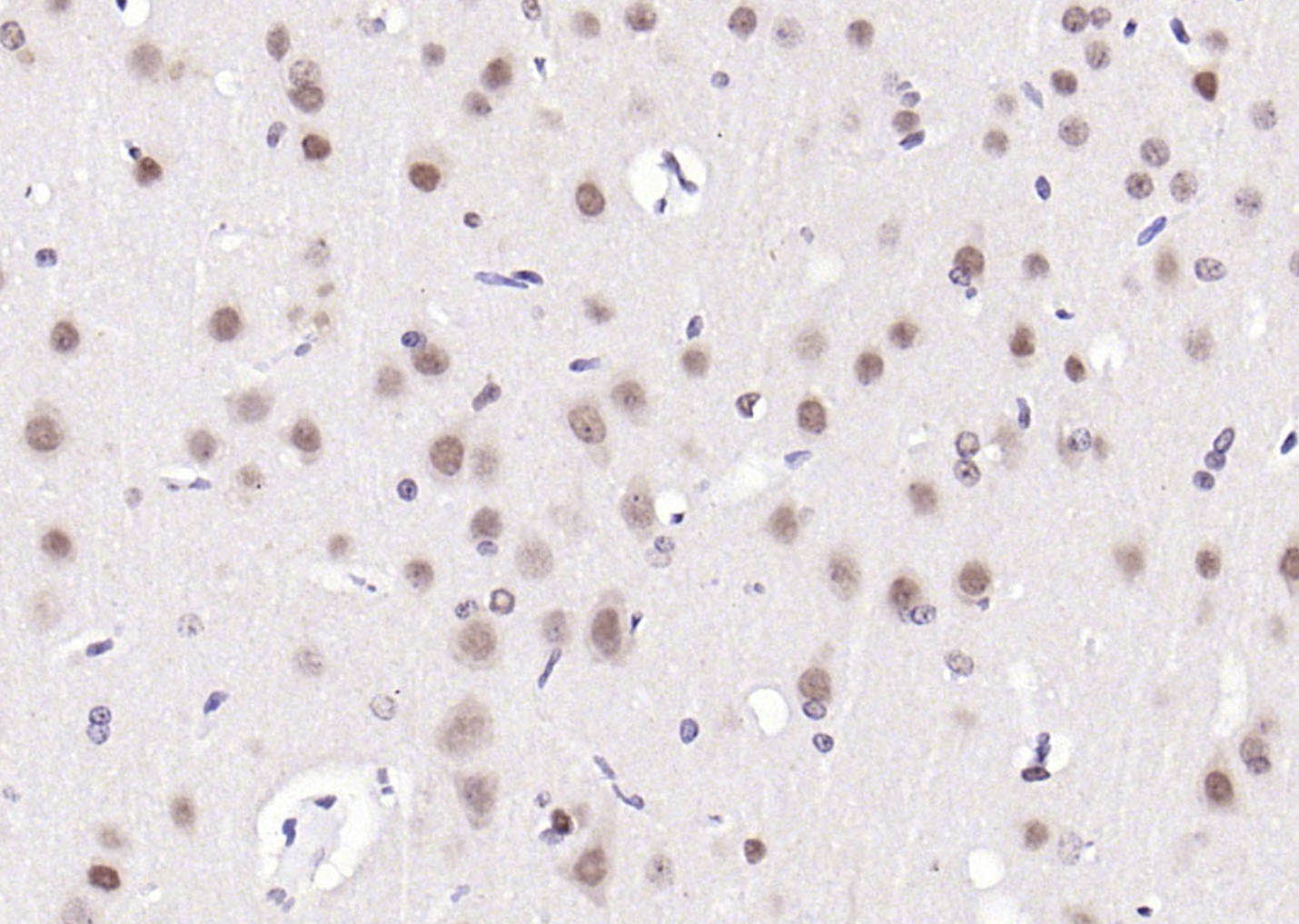
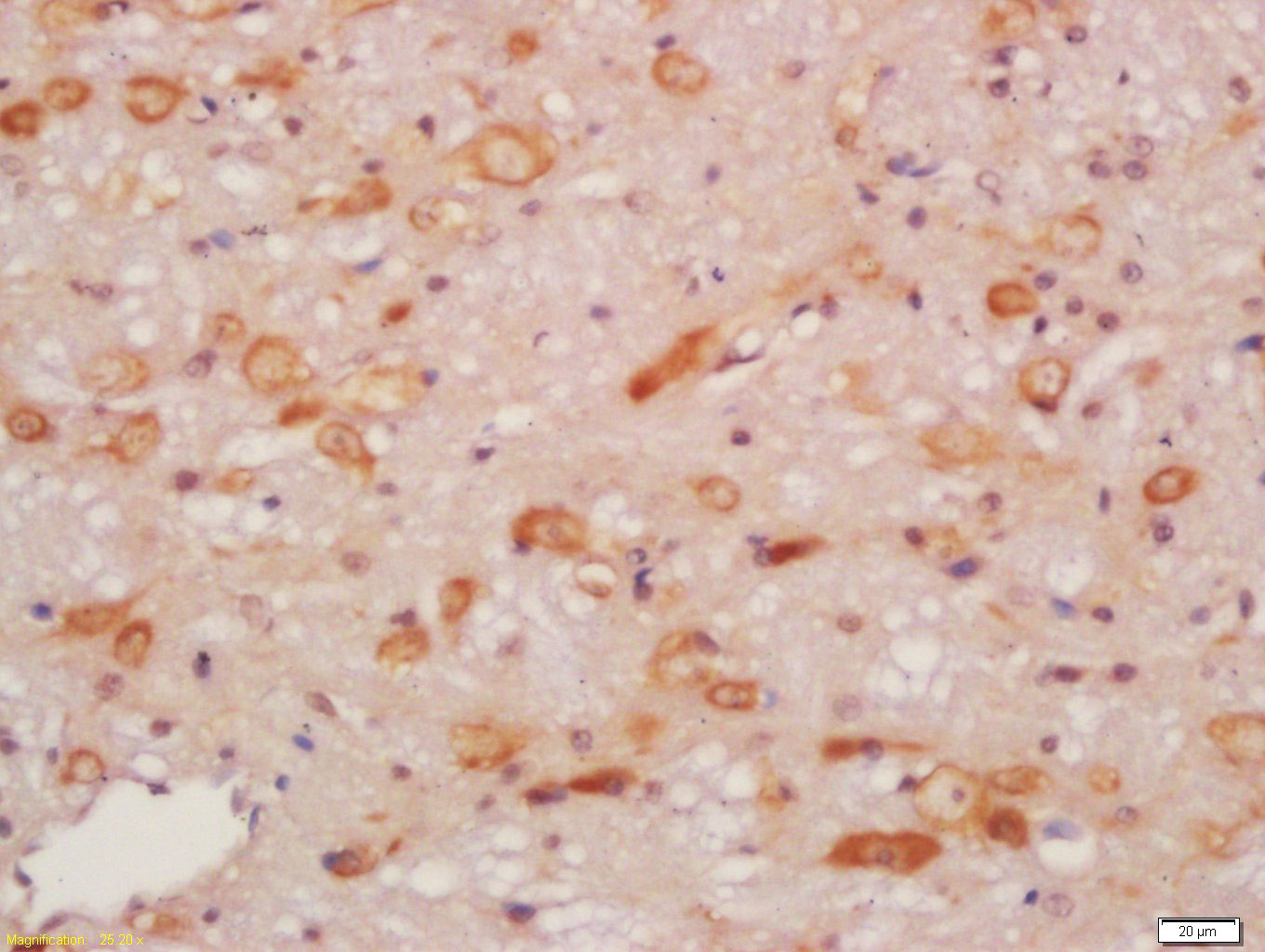
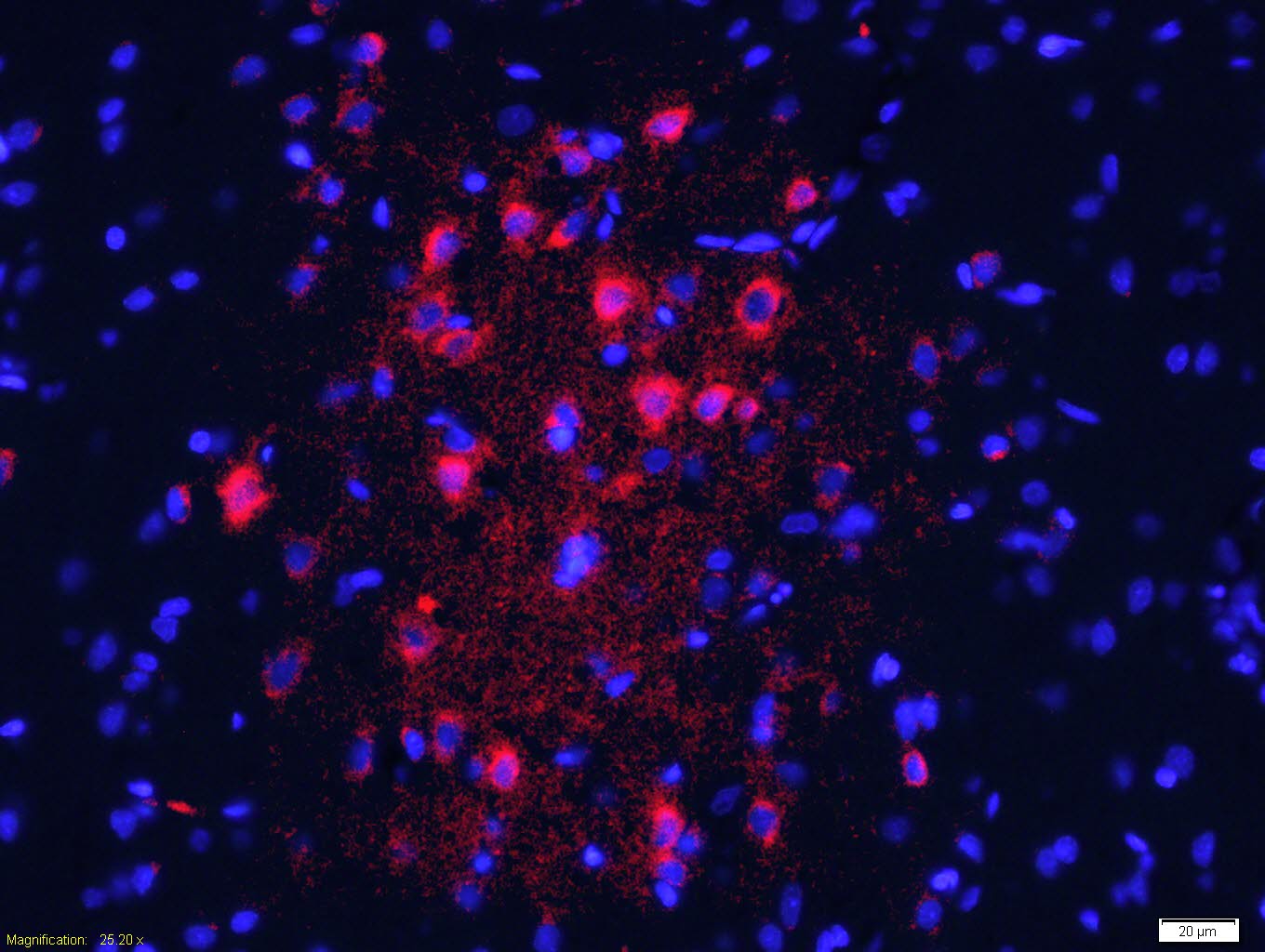


 +86 571 56623320
+86 571 56623320




